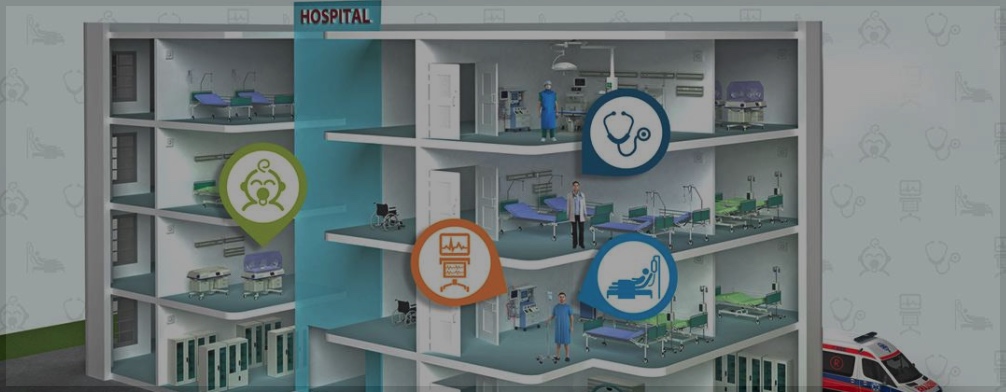Why RTLS is important in Healthcare?
by RTLS Tech
March 1, 2021 .

Why RTLS is needed in Healthcare?
The healthcare industry is one where inefficiency leads directly to productivity losses and contributes to loss of life. This is especially important in a COVID-19 era where Baby-Boomers and aged population strain healthcare capacity.
This is why solutions that track people, assets, equipment, specimens, medicines and other essentials is exceptionally beneficial in healthcare. Besides enhancing productivity, real-time location systems (RTLS) could increase patient satisfaction and more.
The Rise of RTLS Adoption in Healthcare
A forecast showing the state of the RTLS healthcare industry predicts the total worth will reach $2.34 billion by 2027. There are also cases where health systems (IDNs) deploy RTLS in across multiple locations and campuses. Health systems need the ability to track utilization, location, and exposure risk of shared resources across different facilities. These include: hospitals, clinics, labs, storage areas, etc.
Keeping Incidences of Infection Down (HAIs)
Healthcare-acquired infections (HAIs) are widespread in today’s facilities and can be particularly dangerous due to the number of individuals an infected person could come in contact with during a single day. This is especially important during the COVID-19 pandemic. Statistics from the Centers for Disease Control and Prevention (CDC) say that at any given time in a hospital environment, about one in 31 people have HAIs.
The initial motivation and use-case for health systems for using RTLS is business need to reduce the number of high-cost medical devices that get lost or stolen each year. Many health systems today over purchase medical devices by 20% to deal with lost or stolen assets. This clearly validates the reason for needing a RTLS system. Therefore, many health systems initially deploy RTLS to address HAI infections and High-Value asset tracking to start.
There are several ways to apply RTLS to address HAIs via contact tracing. For example, once a facility becomes aware that a patient has a dangerous infection, the RTLS tracking system could monitor where that person goes in the facility and which people, equipment, and- or rooms/areas are potentially contaminated. RTLS, via people/patient tracking, help reduces the spread of infection by providing more transparency/awareness about which patients have dangerous infections. This critical information will notify staff and require them to and to take extra precautions for protection. Traditionally, this information is often manually prepared and may not reach all the people who could be exposed to an infected patient and-or exposed equipment.
RTLS Increases Satisfaction
Health systems know that if a patient isn’t satisfied with the quality of care, they will most likely decide to go to another provider. Reputation is a primary driver of selecting a health care system or hospital. If a patient is exceptionally grieved, they will recommend to others to go elsewhere. A bad reputation leads to higher turnover rates among doctors, staff, and make it difficult to hire premier talent.
When health care professionals learn about the value of RTLS, they recognize that the benefits extend beyond just tracking to patient satisfaction. Hospitals are characterized as one of the few place that are in “constant motion 24 hours a day, 7 days a week.” During treatment, it’s very common for patients to get shuttled between several departments, floors, rooms, lines, etc. Without RTLS, those patients could experience especially long waits due to bottlenecks and inadequate staffing. Wait time and patient satisfaction are directly correlated in health care. Furthermore, staff get frustrated too, knowing that the patients often believe they’re at fault for delays. Additionally, RTLS boosts satisfaction via directly measuring staff engagement to patients. The more minutes spent per patient directly impacts perception of quality of care.
RTLS Providers Focusing on Healthcare
HID Global, Zebra Technologies, and Stanley Healthcare are on the shortlist of providers who scale to meet the needs of Healthcare market. Many providers struggle to provide a solution with cost efficiency, scale, and overall visibility to succeed in healthcare. Many of the provider miss the mark focusing on the limited use-case of laser-like accuracy using high-cost tracking tags, while missing the critical need of providing an affordable tag, good “enough” accuracy for the RTLS to be used across the “entire” health system footprint, not just and ER/ED/Surgery. Point solutions never scale to an entire health system.
tags: healthcare - rtls - contact-tracing - workplace-safety - long-term-care - covid-19 - patient-tracking